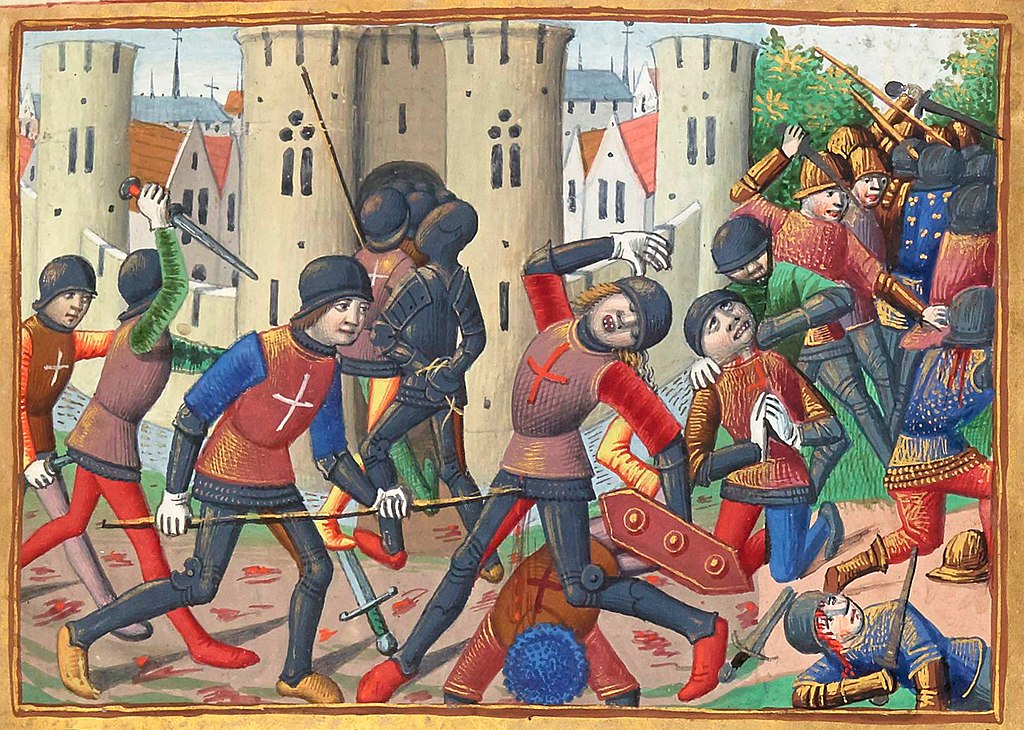Siege of Montargis
Siege of Montargis, 15th July 1427
The Treaty of Troyes had altered the inheritance of the French Crown upon the death of King Charles VI. In 1422, his death saw the crown pass into the hands of the English, in the form of the infant King Henry VI. Much of France was in Anglo-Burgundian hands. Paris and Parlement was governed by the English Regent, the Duke of Bedford; Picardy and Normandy were held and, largely, controlled without threat; Gascony remained in English hands. Other areas that had been pseudo-independent, such as the Duchy of Brittany, were placated and on reasonable terms with the new administration.
The succession was far from smooth though. It had disinherited the Dauphin, as a consequence of the French defeats, and his relationship with his mother as England forced home their victories under Henry V. The Dauphin, Charles, had many backers. Geographically, the central parts of modern day French territories were largely Dauphinist in their sympathies. Charles and his supporters did not give up the fight for his right to the French throne. They held territory, and some significant strongholds.
Montargis: Strategic importance
One such stronghold was the town of Montargis. Only sixty miles away from Paris, it was an important strategic site. The town sat between the rivers Loing and Vernisson. It had a canal network, which enhanced its merchants’ ability to trade with ease. Montargis was also close enough to the Rivers Loire and Seine to prosper from long distance trade. And, critically from a strategic perspective, to control the use of stretches of those two important waterways.
In 1427 John, Duke of Bedford, ordered the Earl of Warwick, Richard Beauchamp, to seize the town. His siege of Montargis began on 15th July 1427. It was a difficult position to take. The canal network worked as a series of moats, plus, they split the lines of besieging forces. Montargis was also strongly fortified, making it doubly hard to successfully take.

The Earl of Warwick utilised artillery against the walls of Montargis. His men encircled the town as best they could, cutting off supply lines. The town could hold out though. It had been well stocked when the siege commenced and the canal network left English lines thin in places, working to the defenders advantage.
The town was so situated that it required three different sieges, which could with difficulty afford assistance to each other: however, the English formed lodgements all around it and fortified them. The Earl of Warwick was quartered in a nunnery on one side of the town. They soon threw bridges over different parts of the river to serve for communications between their quarters. Having done this, they made vigorous approaches towards the town whcih they damaged very much by their cannon and engines of war. The besieged made so good a defence that the business was continued for more than two months.
Chronicles of Enguerrand de Monstrelet
Dauphinist Relief of Montargis
In September, the Dauphin decided to relieve the town. A force of 1600 men led by John, the Bastard of Orléans, and La Hiré, was readied. The English army around Montargis was 3000 strong. The Dauphinist commanders plotted a strategy to strike them hard.
Having managed to get messages into Montargis the Dauphinist plan worked superbly. Part of the relief force marched down the main road to Montargis, causing the English to form up to attack them. As they crossed the River Loing to do this, the garrison of the town opened the sluice gates. This created a flood that split the force into two. The garrison then sallied onto those Englishmen who had not crossed the river. On the other side, the English who had crossed were met by an assault by the relief force. With neither part of the English force able to reach the other, they were both overwhelmed. The remainder of the English forces around Montargis were manning siege lines. They were not large enough, or concentrated enough, to mount any counter offensive, and fled, leaving behind all of the siege equipment and artillery.
It is estimated that a third of the Earl of Warwick’s men were lost in this action. It was one of the few Dauphinist successes prior to the arrival of Joan of Arc among their army.
The Duke of Bedford had the siege of Montargis renewed shortly after this defeat. It fell prior to the English beginning the Siege of Orléans.
Image Credits
Featured Image: Siege of Montargis, 1427. Les Vigiles de Charles VII, manuscrit de Martial d’Auvergne, vers 1484, BnF, Manuscrit Français 5054, enluminure du folio 51 recto. Source, wikimedia commons.
Map: Siege of Montargis. Map by Justin Lalier 1853, Source, wikimedia commons.
